The Stellar Circle of Life
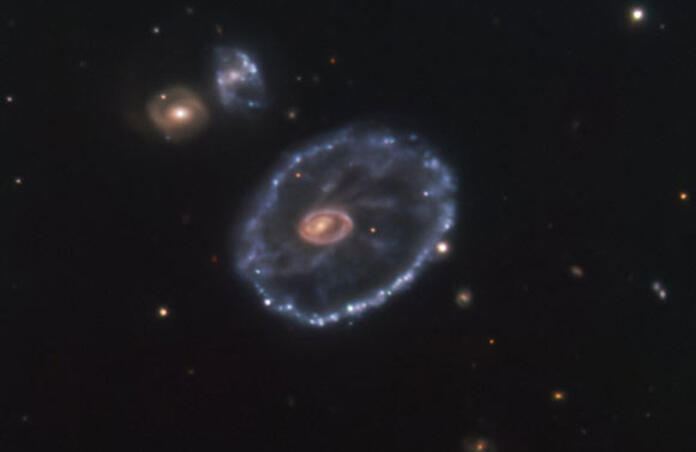
A supernova steals the show in the Cartwheel Galaxy!
It’s in Asteroid Terrestrial-impact Last Alert System (ATLAS) survey data that something unusual was spotted for the first time in the Cartwheel Galaxy, in late November 2021. It might come as a surprise that astronomers use an asteroid-detection survey as a means to observe supernovae, but with its set of 4 telescopes on the Hawaiian islands that scan the sky multiple times each night, ATLAS is in a good position to perceive an unexpectedly bright point. In fact, ATLAS has found 737 Near-Earth Asteroids, among which 10% ended up being catalogued as potentially hazardous, but discovered almost 11 000 supernovae !
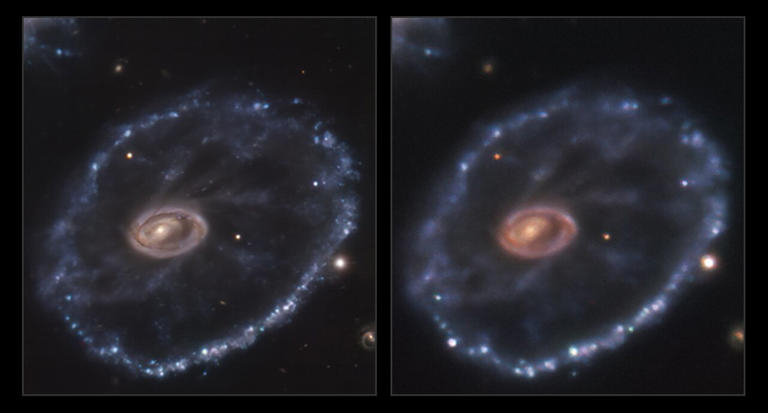
The earlier image, on the left, was taken by the Multi-Unit Spectroscopic Explorer (MUSE) instrument on ESO’s Very Large Telescope (VLT) in 2014 and shows the Cartwheel Galaxy before the supernova, providing a reference point. After the event was discovered by ATLAS, the image on the right was obtained as a follow-up with another ESO telescope in Chile, the New Technology Telescope (NTT). This whole process happens as part of the Transient Name Server (TNS), which is the official International Astronomical Union (IAU) platform for reporting new astronomical transients and enabling further studies. That’s also where the events get named: Astronomical Transient AT 2021afdx for the one in the Cartwheel Galaxy. Amateur astronomers are encouraged to participate in the TNS effort and report any of their images where they notice what might be a supernova, or provide follow-up data to validate an initial identification.
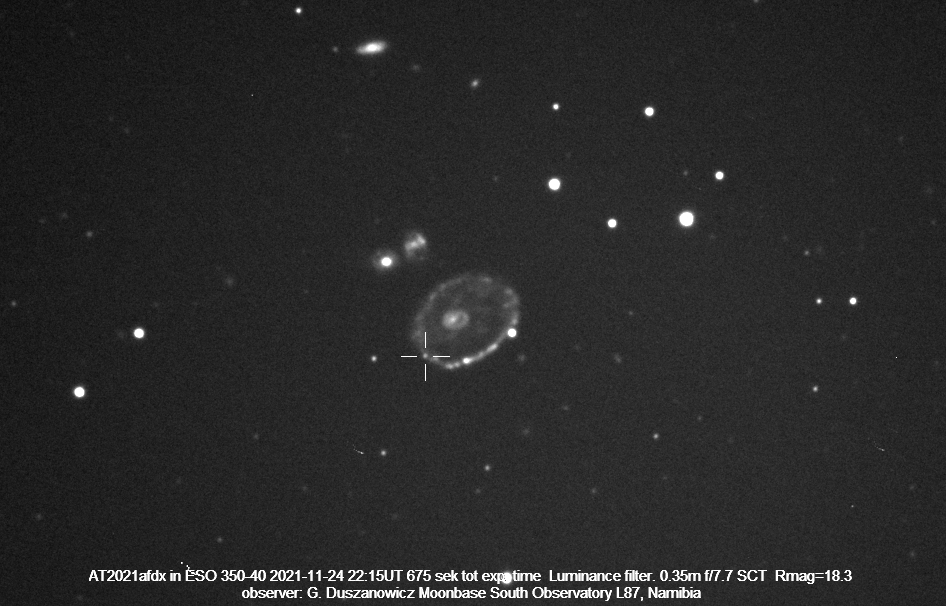
To confirm the specific type of transient event that was observed, astronomers pushed the analysis further by conducing spectroscopy with the NTT’s Public ESO Spectroscopic Survey of Transient Objects (PESSTO). By thus “breaking down” the light into its constituent wavelengths, they were able to determine the presence of Hydrogen in the spectrum, which signals that the supernova candidate is most likely to be a Type II supernova. This is the death of a massive star, at least 8 times more massive than the Sun, in a massive collapse and explosion that leaves behind either a neutron star or a black hole. Back to the TNS, once the transient is classified as a supernova it receives its final name, and so the Cartwheel Galaxy‘s transient was finally baptised SN 2021afdx.
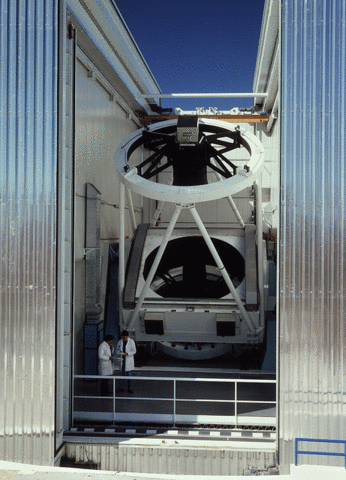
NTT 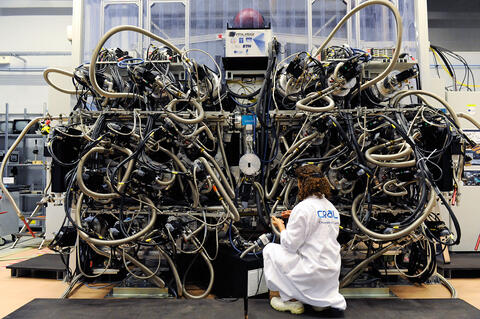
MUSE
MUSE has also been used for the Physics at High Angular resolution in Nearby GalaxieS (PHANGS) project, which is a multi-wavelength observation programme to understand the early stages of the life of stars. One of the latest images MUSE took for this project is that of M99 pictured below, which highlights regions of star formation in the galaxy’s spiral arms.
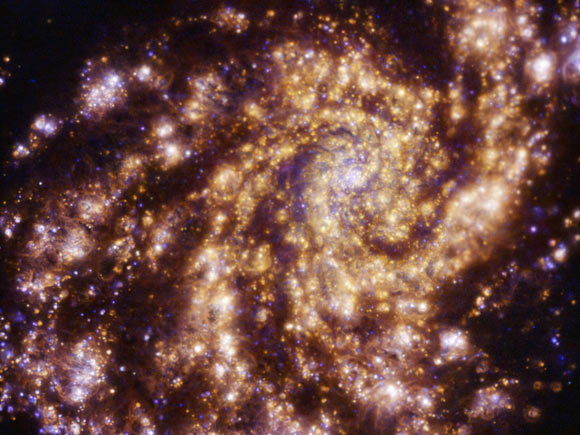
Soon enough, infrared images from the James Webb Space Telescope (JWST) are going to fill in the gaps in PHANGS’s current data – high-resolution images in the infrared will notably allow astronomers to peer into the clouds of dust where stars are forming, which will be the first time that young star clusters inside these molecular clouds will be directly imaged. Telescope time to fulfil this ambition was allocated as part of the JWST Cycle 1 General Observers (GO) program, and the collaboration extends to the Atacama Large Millimeter Array (ALMA) and the Hubble Space Telescope (HST) in order to provide the most detailed inventory possible of the different phases of the star-formation cycle.
New supernovae are always an exciting event to spot, and research on star-forming regions always yields new stunning images - and beyond the marvel, there is still so much to learn about star death and star birth !
Cover Image: Cartwheel Galaxy with supernova, ESO / Inserra et al. / Amram et al.
Image Credits:
1 - Cartwheel comparison, ESO / Space
2 - AT 2021afdx, G. Duszanowicz
3 - NTT, ESO
4 - MUSE, E. Le Roux / Service Communication / UCBL / MUSE
5 - M99, ESO / PHANGS
